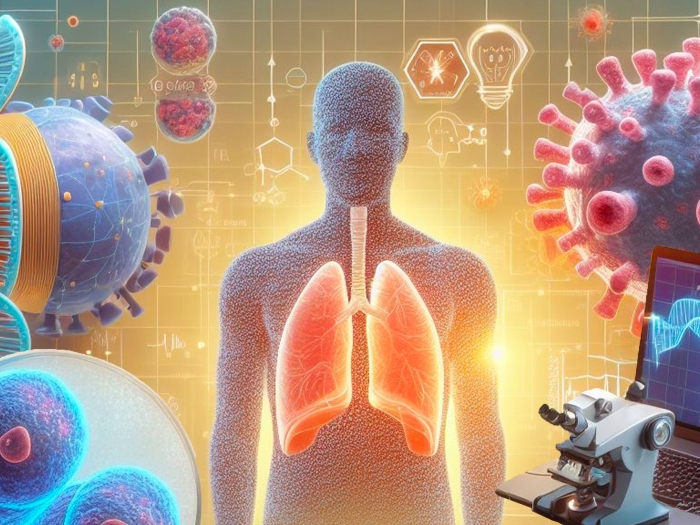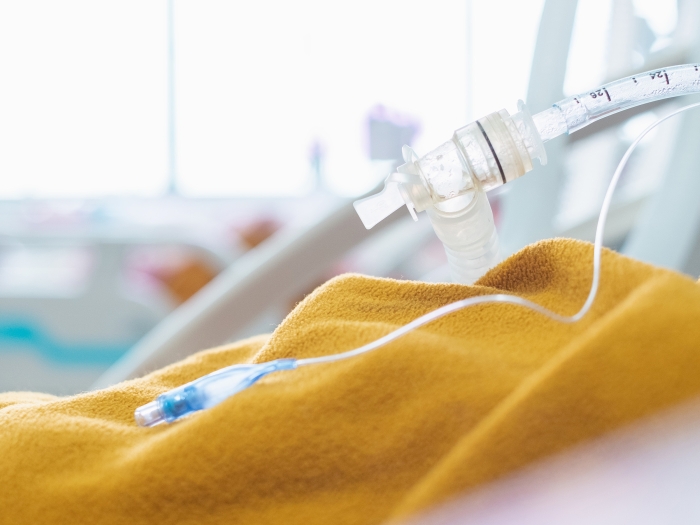Interventional pulmonology, a relatively new medical subspecialty, is changing the way doctors diagnose and treat lung and airway conditions, including lung cancer.
1:00 PM
Author |

Over the past 30 years, interventional cardiology has transformed heart care — replacing many interventions that used to require open-heart surgery with less invasive procedures.
LISTEN UP: Add the new Michigan Medicine News Break to your Alexa-enabled device, or subscribe to our daily audio updates on iTunes, Google Play and Stitcher.
Today, that same revolution has arrived for pulmonary medicine with interventional pulmonology, or IP. The subspecialty offers a variety of minimally invasive procedures to diagnose and treat both benign and cancerous disorders of the lungs and airways.
The IP toolbox
The foundation of IP is endoscopy, during which a doctor remotely manipulates tiny imaging or surgical tools through a thin tube placed in the body.
"In IP, we use a range of endoscopic tools to look for and treat tumors, bleeding or inflammation in the lungs or airways, and to obtain fluid samples or tissue biopsies for testing," explains Michigan Medicine interventional pulmonologist Jose Cardenas-Garcia, M.D. "And we do so without subjecting patients to surgery, hospitalization or lengthy recovery."
MORE FROM MICHIGAN: Sign up for our weekly newsletter
Most IP procedures involve some form of bronchoscopy: In flexible bronchoscopy, a bendable endoscope is passed through the patient's mouth or nose and into the airways in the lungs. In rigid bronchoscopy, a stiff endoscope is inserted that holds the airway open.
In either case, once the bronchoscope is in position, doctors can perform interventional procedures using tiny cameras or surgical tools passed through it. They can capture images, take tissue or fluid samples, dilate areas, implant stents, and remove or reduce tumors or blockages.
A number of these procedures use heat, cryotherapy or lasers to remove tissue or control bleeding. The Michigan Medicine team is also evaluating new endoscopic techniques to diagnose and treat lung lesions.
Improving lung cancer care with IP
Patients with primary lung cancer and those with other cancer types that have spread to the chest visit the Rogel Cancer Center's multidisciplinary thoracic oncology clinic. The center's weekly tumor conference brings together specialists from every related discipline to discuss the care plan for each patient. IP plays a prominent role, offering both diagnostic and treatment alternatives not available just a few years ago.
For some patients, tumors, bleeding or inflammation associated with cancer can block airways, making breathing difficult, especially when lying down. That can mean stopping treatments that require lying flat, like radiation therapy.
Minimally invasive IP procedures can remove obstructions or implant stents to clear airways. "The surgical alternatives require both a significant incision and a hospital stay," Cardenas-Garcia says. "Instead, patients can resume treatment and/or return home right away, breathing better."
Another complication of cancer is developing a pleural effusion, a buildup of fluid in the membrane surrounding the lungs that impairs breathing. IP procedures can drain pleural fluid, both easing the pressure and sampling fluid for testing.
SEE ALSO: How Radiation Therapy is Becoming More Personal
If the problem persists, doctors can insert a catheter that the patient can operate to drain fluid at home. "Our approach is different from many other centers," Cardenas-Garcia says. "We don't just place the catheter. We educate the patient, help coordinate home nursing visits and supplies, and follow up to manage any complications, all to keep the patient as comfortable and mobile as possible."
The IP team at Michigan Medicine also performs diagnostic and therapeutic pleuroscopy, an outpatient procedure done under minimal sedation that can provide tissue diagnosis and place chronic catheters in the pleural space at the same time.
For each of Cardenas-Garcia's patients, the goal is the same. "It's all about using interventional pulmonology to improve their quality of life," he says. "We're making it possible for them to breathe more comfortably and spend more time at home — and less in the hospital."
If you have questions about lung cancer and treatment options, call the Rogel Cancer Center Cancer AnswerLine and speak with one of our oncology nurses.

Explore a variety of healthcare news & stories by visiting the Health Lab home page for more articles.

Department of Communication at Michigan Medicine
Want top health & research news weekly? Sign up for Health Lab’s newsletters today!




